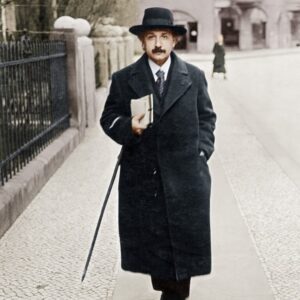60 Carbon Atoms Contain an Entire Quantum Computer; or so might one think, if fully understanding and controlling the buckminsterfullerene were to come to fruition.
The most symmetric molecule known, the “buckyball” is both small enough to observe quantum mechanical principles and large enough to be considered a “huge system.” Just how huge is this 60 atom microscopic structure? The size of a quantum computer, performance wise.
It is conceptual that a single buckyball could perform as a quantum computer. Consider the practical applicationa: Buckyballs could act as a pristine network of 60 atoms.

“JILA researchers used frequency combs, or ‘rulers of light,’ to observe individual quantum energy transitions in buckyballs. (Image Credit: Steven Burrows, JILA)”
“The core of each [carbon] atom possesses an identical property known as ‘nuclear spin,’ which enables it to interact magnetically with its environment. Therefore, each spin could act as a magnetically controlled quantum bit or ‘qubit’ in a quantum computer.”
60 atoms, 60 spins, 60 qubits. Sounds like the way Google’s Bristlecone quantum computer chip has been described at 72 qubits.

